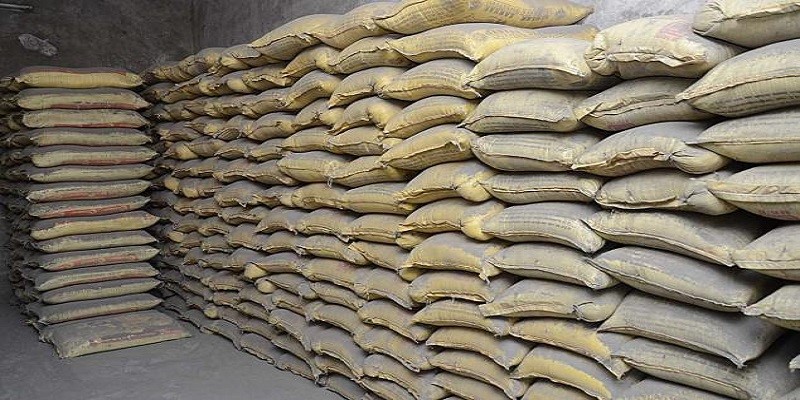Cement is an extremely fine material having adhesive and cohesive properties which provide a binding medium for the discrete ingredients. It is obtained by burning together, in a definite proportion, a mixture of naturally occurring argillaceous and calcareous materials to a partial fusion at high temperature about 1450⁰c. The product obtained on burning called clinker, is cooled and grinded to the required fineness to produce a material known as cement.

Materials used in construction should be of good quality and to check whether a material is standard or not, sampling and testing is important. WHILE sampling cement from a lot (cement from the same manufacturing unit), the lot is divided into a number of sub-lots. Number of sub-lots into which a lot is to be divided is depends upon the weight of the lot.
Use the following table while dividing the lot into sub-lots.
| Weight of lot (in Tonnes) | Number of sub lots |
| Up to 100 | 2 |
| 101-200 | 3 |
| 201-300 | 4 |
| 301-500 | 5 |
| 501-1000 | 6 |
| 1001-2000 | 7 |
Take sample from at least 2% of the bags subject to minimum of five. Randomly choose a minimum 5 no. of bags from sub-lot.
Procedure for Random Sampling of Cement bags from Sub-Lot
- First count the number of bags in a sub-lot. Let it be “N”.
- Then decide how many bags you need to sample. As a guide a minimum of 5 no of bags should be selected.
- Divide the total no of bags (i.e. N) with the no of bags to be sampled (i.e. N/5). Let it be “x”.
- Now starting from any bag at random, count the bags in the sub-lot in one order as 1, 2, and 3 up to x and so on. Every x th bag so counted shall be removed.

Sampling from cement Bags
- Choose the number of bags to be sampled from the stock in random manner.
- Samples should not be taken from broken bags.
- Insert the sampling tube diagonally into the valve of the bag and place your thumb over the air hole and then withdraw the sampling tube.
- Take approximately equal number of increments from each of the bags as selected above.
- Weight of each increment should not be less than 2 kg.
- Empty the contents of the sampling device into the container. Repeat the procedure until the required quantity has been obtained. Close both the container and hole made by the sampling device in the mouth of the bag tightly so that no air or moisture gets into it.
- The number of samples taken will depend on size of the stock but at least 12 samples must be taken from each stock.
- Mark each sample, showing clearly from which stock it was taken from, the date, sample number, and from where from stock the sample was taken

Packing of Sample
- Store the sample as selected above in a moisture proof, air-tight containers to avoid moisture absorption and aeration of the sample.
- If want to store the samples in can, then completely fill the can and seal it immediately.
- The containers must carry suitable identification marks so that they can be related back to the particular sub-lot from which the gross sample has been taken.
Sampling Cement in Bulk Containers
If the stock of cement is less than 2m deep single samples can be obtained with slotted sampling device. Take single samples at as many different depths and well spaced points in the container as possible, and place each sample in a separate sample container. Close the container properly to prevent moisture or air getting to the sample.
Precautions to be Taken While Sampling
Following precaution to be taken while sampling of cement
- The sampling instrument shall be clean and dry when used
- Precautions shall be taken to protect the sample, the material being sampled, the sampling implement and the containers for samples from adventitious contamination
- The sample containers shall be of such a size that they are almost completely filled by the sample
- The sample containers shall be sealed air-tight after filling and marked with full particulars of the material and the date of sampling
- Samples shall be stored in such a manner that the temperature of the material does not vary unduly from the normal temperature
- The place of sampling shall be clean and dry and free from draught
 (+91) 7249196273
(+91) 7249196273
